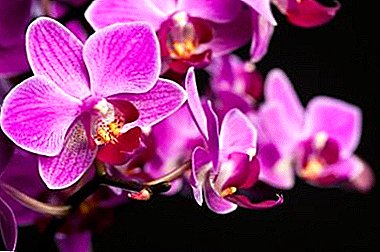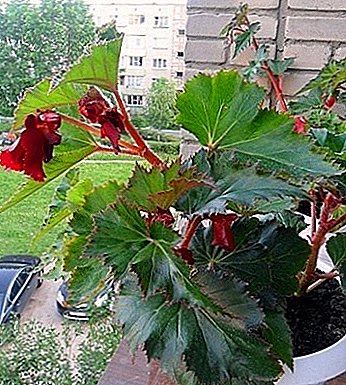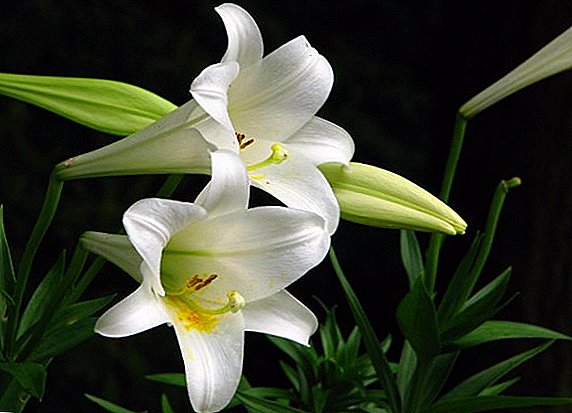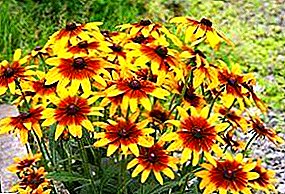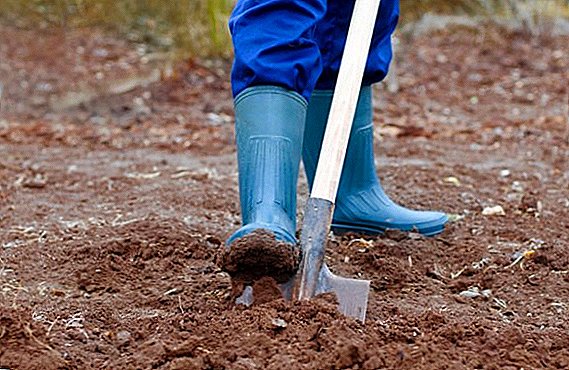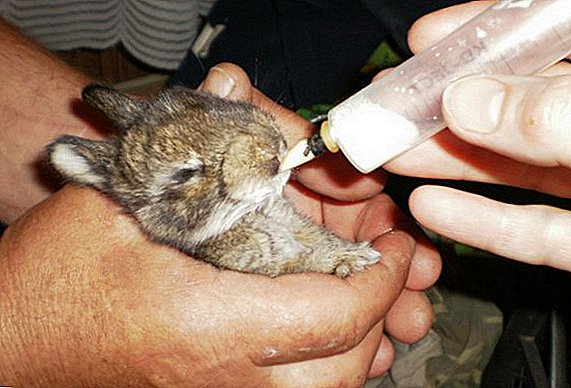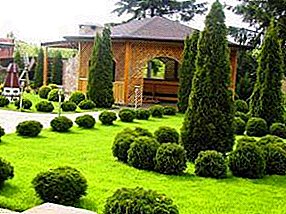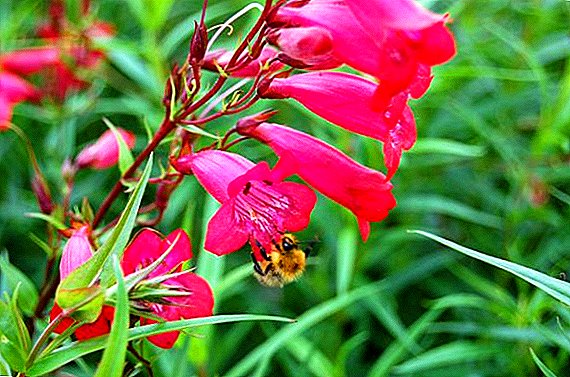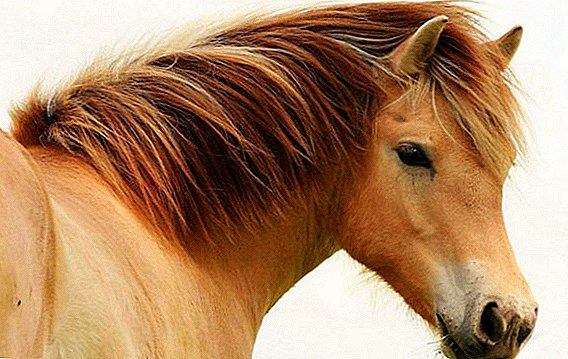 The appearance of a galloping horse with a beautifully flowing mane is able to charm any romantic-minded person.
The appearance of a galloping horse with a beautifully flowing mane is able to charm any romantic-minded person.
However, people with a pragmatic mindset, accustomed to thinking that nature does not give anyone anything just like that, often think about why the horse was given mane.
Let's look at the answer to this question, and also find out how to properly care for it.
Why do horse mane
First of all, the hair performs the function of protection:
- shaking them, the horse drives away the insects;
- hair absorbs sweat;
- in the cold period, the mane warms the neck;
- in the heat, waving his hair, the horse cools down;
- during precipitation, the skin is protected from moisture, which the hair repels.
 Another function that hairs perform is the function of beauty. Many owners pay a lot of attention to the beauty of the hair on the body of a beloved animal: they are clipped, washed, moisturized, smeared with protective agents, braided, and styled. You can admire the result of such work for a long time.
Another function that hairs perform is the function of beauty. Many owners pay a lot of attention to the beauty of the hair on the body of a beloved animal: they are clipped, washed, moisturized, smeared with protective agents, braided, and styled. You can admire the result of such work for a long time.The hair also serves as an indicator of horse health.
The problems and diseases indicate:
- Fluid hair coat - this means that the animal is tormented by parasites.
- Dull hair - unbalanced nutrition.
- Hair falls out bunches - itching on the neck, as a result the horse rubs and tears them out, or improper feeding.
- Bald spots - possible fungal disease.
- Mats - do not care for animals, poor care can lead to diseases.
Did you know? The record for the length of the mane in 5.5 m belongs to the Californian horse named Mawd.
Proper mane care
If you do not care for the hair, clogged particles of dirt together with sweat can cause irritation, the horse will itch a lot and can tear the skin to blood. Then the hair in this place will fall out, and the mane will lose appeal. Felled wool will not allow you to repel insects, fungus may also appear.  Mandatory horse mane care procedures include washing and cleaning. You can also take care of her protection and please your eye with hairdressing - make styling and haircut.
Mandatory horse mane care procedures include washing and cleaning. You can also take care of her protection and please your eye with hairdressing - make styling and haircut.
Wash
Under normal conditions, the race horse will wash his hair once a month and before the competition, while the worker will wash it once every 2 weeks. However, these are general recommendations; it is necessary to monitor how quickly each horse’s hair becomes dirty separately, perhaps you will need to wash it more often.
You can wash the mane with a special shampoo designed for horses, or laundry soap. You can use a brush or hands for washing. Water is taken cool and poured from a hose or bucket, trying not to get into the ears. It happens that the hair in the mane becomes a yellow shade, then you need to buy a whitening shampoo.
Important! Animal shampoo for animals is not suitable, as it can dry the skin.
After washing the hair is rinsed thoroughly, as the remains of soap suds can irritate the skin of the horse. To shine in the water, which is rinsed, add salt, it will be enough 100-150 g per bucket of water. After bathing the mane must be combed.  For protection and healthy shine, hair is treated with conditioner, smeared with a few drops of flaxseed, burdock, sea buckthorn or tea tree oil and spread with a brush. Note that after the conditioner on the hair will not hold the gum, fixing the hair.
For protection and healthy shine, hair is treated with conditioner, smeared with a few drops of flaxseed, burdock, sea buckthorn or tea tree oil and spread with a brush. Note that after the conditioner on the hair will not hold the gum, fixing the hair.
In winter and during the molting period, the horse is not bathed, otherwise it may catch a cold. Instead, the mane is sprayed with air conditioning and combed. In case of heavy dirt, you can soak a rag in warm water with shampoo, squeeze out the water and rub the hair with it, then wipe it off and cover until the cloth dries.
It will be useful for you to familiarize yourself with the anatomy of a horse, as well as to learn about the structure and functionality of a horse's tail.
Brush
Mane cleansing should occur daily. Before the procedure, they inspect it, take out the garbage by hand, straighten the mats. Hands are distributed on the strands and combed out each of them separately with a comb, while simultaneously massaging the skin. You need to move from the tips to the roots, gradually unraveling, then along the entire length.
Basic requirements for the ridge:
- large gaps between teeths;
- blunt tips;
- material - plastic or wood, but not metal;
- on the crest should not be chipping.
When the comb begins to easily pass through the hair, start brushing with natural bristles. 
Other procedures
The horse hair can be cut or styled, then it will look more beautiful.
How to trim a horse's mane
Most often, the horse's hair is cut when it thins, sometimes it can trim the hair or make a model haircut "like a hedgehog." Shear clippers, then the hair washed and dried. To the neck of a horse is not frozen, do a haircut long before the onset of cold weather.
Did you know? Wild horses make a haircut, nibbling on each other's mane.
How to braid
Before you braid pigtails, you can apply a special gel to your hair to make it easier to place. Fix hair with elastic bands or ribbons.
There are such ways of weaving:
- Western Style - the mane is divided into small strands and fixed with rubber bands. Next gum wear over the entire length with the same interval.
- Hunting pigtails - hair is divided into strands so that their number is a multiple of 3. Of every 3 strands weave braids, weaving into them ribbon, with which the ends of the braid are twisted inside. The ends of the tape are hidden in braids.
- Continental pigtails - The hair is divided into strands and fixed with an elastic band. At regular intervals, halves of adjacent strands are fixed with an elastic band along the entire length in order to form a grid.
- One big pigtailwhen weaving is done from the head to the body, gradually weaving the lower strands.
 You can also braid your hair in a braid for the night after bathing, then in the morning, after unraveling the braid, they will be wavy.
You can also braid your hair in a braid for the night after bathing, then in the morning, after unraveling the braid, they will be wavy.Important! So that the laying is not tangled, it is checked daily, it is reworked once a week, and the neck is treated with a special tool that protects against the bites of other horses.
Thus, horse mane is not only beauty, but also health and protection. In order for it to perform all these functions, it must be washed and cleaned. For a more attractive look, horses are cut and styled.



